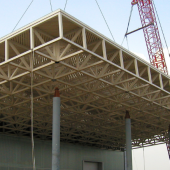It is also a good season for the great world of construction, an absolutely driving sector for the national economy and for the wood and furniture technology sector, given the deep connection between products made with these technologies and building envelopes.
Furniture, windows, doors, cladding, stairs: there are thousands of “wood-based” products that are a constituent part of any space, be it residential or commercial. And so it is no coincidence that the world of furniture tout court – and, secondarily, of our technologies – looks with great attention to trends and evolutions.
Much awaited, therefore, is the presentation of the data contained in the valuable Saie Observatory, a survey conducted by GSR Research & Strategy for Senaf – the company that organises Saie, the construction exhibition scheduled to take place in Bologna from 19 to 22 October this year – on a sample of Italian companies involved in production, distribution and services for the building and plant sector in June 2022.
A report that highlights a number of ‘hot’ macro-themes, starting with galloping inflation that in June 2022 reached a record value of plus 8 percent on an annual basis (ISTAT data), yet the construction sector manages to produce positive results. Despite the fact that the increase in raw material and energy prices affects around eight out of ten companies, production, distribution and service companies for the construction sector (building and plant) are generally satisfied with their turnover. In the past year, just over half of them (53 per cent) have even had to give up work due to too many demands, with 46 percent focusing on hiring new staff to increase production capacity.
In recent months, a great deal of help has come from incentives, especially the “110% Superbonus”, which, pending its future, has so far resulted in an average of up to a quarter of the turnover for 80 per cent of the 10 companies.
The macroeconomic difficulties are, however, having an effect on two aspects in particular: for 68 percent of the companies on the price increase of the finished product, for 60 percent they are the cause of delivery delays.













